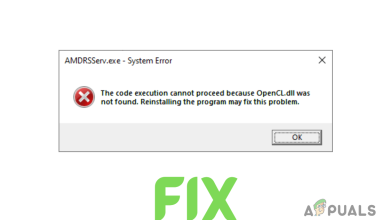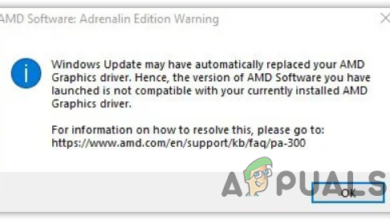How to FIX AMD Driver Error 182?
The AMD Error 182 is reported by Windows users that are unable to update their graphics drivers to the latest version available with AMD software. Most users encountering this problem have previously confirmed that their GPU is outdated.

As it turns out, there are several different scenarios that might end up causing the AMD Error 182:
- AMD product not supported by AMD Software – Keep in mind that although AMD Software it’s the main auto-update utility for AMD, it does not support certain products. In case you are using a customized AMD GPU, a legacy AMD GPU or an embedded AMD graphics card, you will likely need to update your driver manually using the AMD Driver Selector web-tool in order to avoid the error.
- GPU can only be updated via Windows Update – As it turns out, AMD has a wide selection of APUs that can only be updated via the Windows Update component. If you’re using one of these models, you will need to update your driver via Windows Update.
- Corrupted GPU driver files – Under certain circumstances, you might see this issue due to some type of file corruption among your AMD driver files or associated dependencies. In this case, you will need to do a GPU clean install procedure.
- Legacy Integrated GPU is confusing the updating utility – If you are using a legacy integrated ATI Radeon GPU (ATI Radeon 3000 or under), it’s very likely that the AMD Software utility is trying to update the integrated GPU driver instead of the one belonging to your discrete (dedicated GPU). In this case, you will need to disable the integrated GPU (either via Device Manager or directly from your BIOS settings).
- System file corruption – As some affected users have reported, this problem can also occur due to an underlying system file corruption that is rooted in your OS files. In this case, the only viable fix is to reset every Windows component (via a clean install or repair install).
Using the AMD Driver Selector
The AMD Software application contains a series of generic drivers that support a wide variety of graphic products. But there are certain AMD products that are not supported by AMD Software:
- Customized AMD Graphics (Custom made for an OEM)
- Legacy AMD graphics (AMD products that are over 5 years old)
- Embedded AMD graphics
In case your particular graphic card solution falls into one of the categories featured above, it’s very likely that the updating software cannot update your driver because it belongs to an unsupported product group.
If this scenario is applicable, your only choice of updating the driver is to use the AMD Driver Selector to locate and download the appropriate driver. Here’s a quick guide on how to use this web tool to download and install the latest driver for your driver:
- Open your default browser and click on this link (here) to access the AMD Driver Selector utility.
- Once you’re inside, ignore the Download section and scroll to the section below and search for your graphics card solution using the search bar or select your GPU product manually via the menu below. Once the appropriate product is selected, click on Submit and wait for the results to be generated.
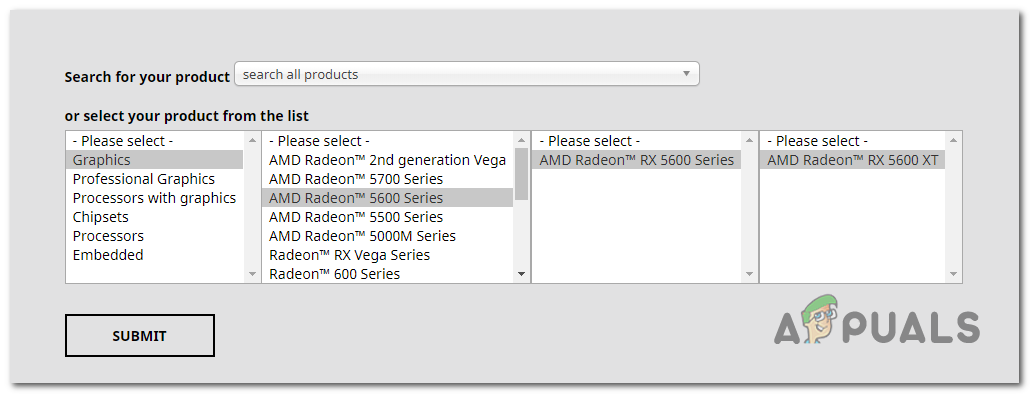
Finding the driver via Driver Selector - Once the results are generated, click on the Drivers tab at the top, then expand the drop-down menu associated with the operating system that you’re using. Next, click on the Download button and wait for the operation to complete.
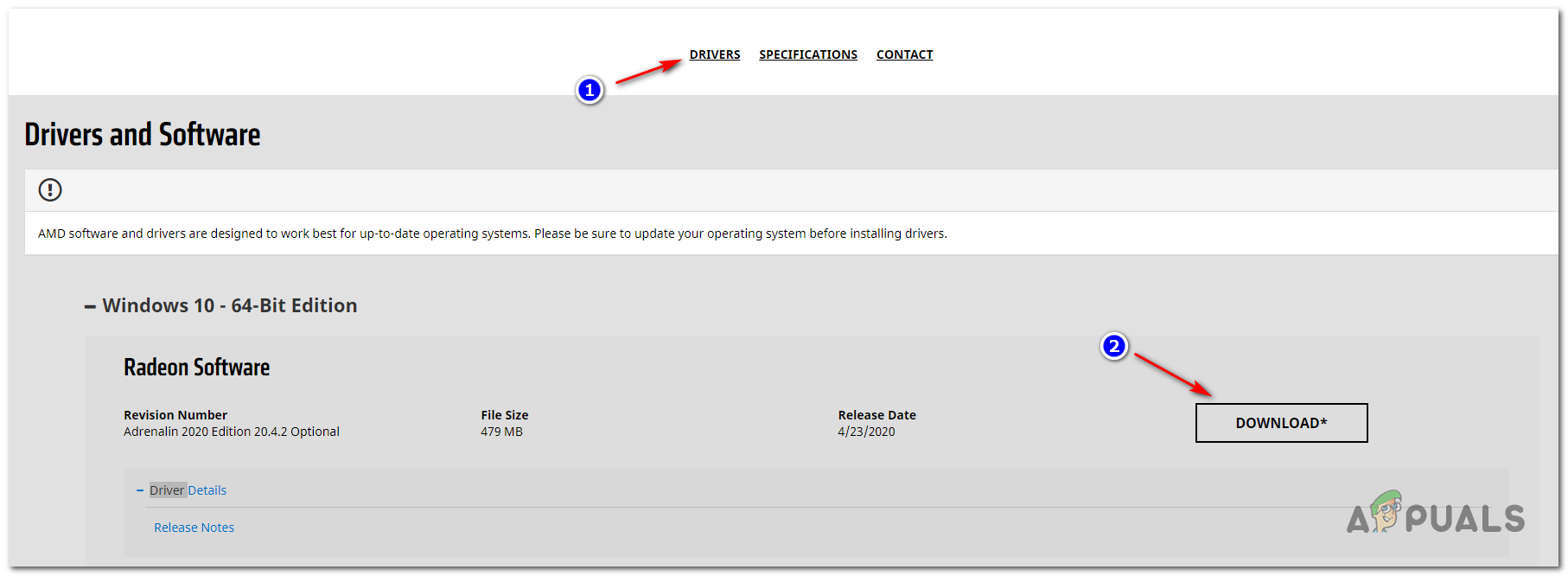
Downloading the latest compatible Driver version - Once the download is complete, open the installation executable and follow the on-screen complete the driver update.
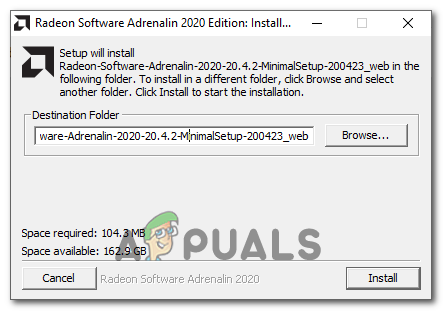
Installing the AMD driver Note: During this procedure, your screen will flicker several times. Don’t freak out, cause it’s completely normal.
- After the installation is complete, restart your computer to complete the driver installation.
In case this workaround still ended up showing the AMD Error 182 or this scenario was not applicable, move down to the next potential fix below.
Updating Driver via Windows Update (if applicable)
Keep in mind that with AMD, certain APUs (Advanced Processing Units) are not built to be updated conventionally (via Adrenalin or Driver Selector). With some models, graphics driver support is handled exclusively by Windows Update. So if you have a GPU model like this, you will need to update it via Windows update – AMD Software will not be able to update it.
Here’s a list with APUs that can only be updated via the Microsoft Windows Update component:
- AMD A4/A6/A8-3000 Series APUs
- AMD E2-3200 APU
- AMD E2-3000M APU
- AMD E2-2000 APU
- AMD E1/E2-1000 Series APUs
- AMD E-200/300/400 Series APUs
- AMD C-Series APUs
- AMD Z-Series APUs
If you have one of the AMD processing units featured above, follow the instructions below to update your AMD graphics driver via Windows Update:
- Press Windows key + R to open up a Run dialog box. Next, type ‘ms-settings:windowsupdate’ and hit Enter to open up the Windows Update tab of the Settings tab.
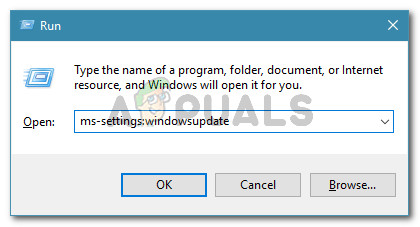
Run dialog: ms-settings:windowsupdate Note: In case you’re using Windows 7, use this command instead: wuapp.
- Inside the Windows Update screen, move to the right-hand section of the screen and click the Check for Updates button.
- Once the initial scan is complete, go ahead and install every pending update (including AMD drivers)
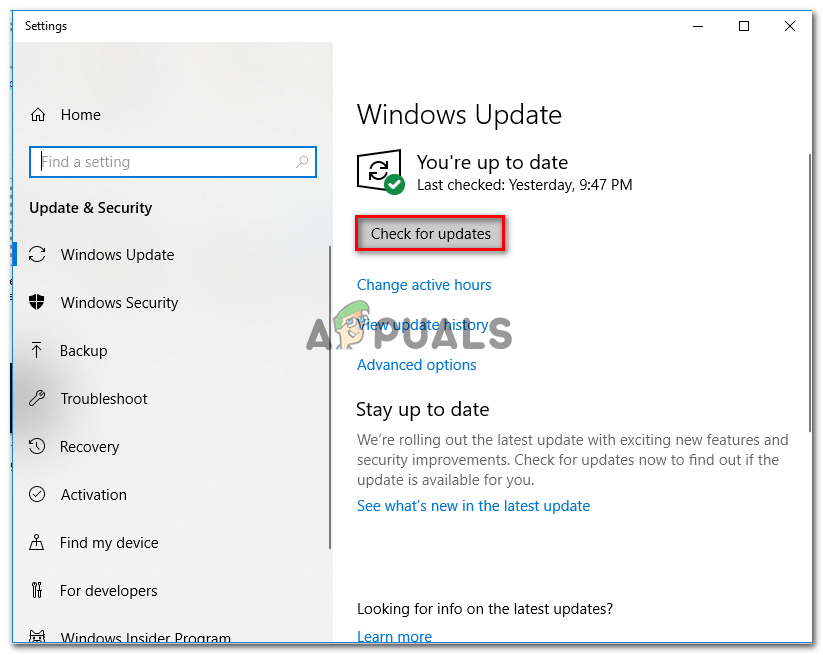
Installing every pending Windows update - Once every driver is installed, restart your computer to complete the driver installation.
In case this method is not applicable, move down to the next potential fix below.
Clean installing GPU driver
If none of the fixes above have worked for you, it’s likely that you’re dealing with a severe case of corruption among your driver files or dependencies, which makes it impossible for AMD Software to install the new driver version.
In this case, the most effective fix that will allow you to get past the AMD Error 182 is to simply do a GPU clean install. This operation involves uninstaller the driver conventionally, deleting the root AMD driver folder and then using a 3rd party powerful GPU driver uninstaller to remove any leftover corrupted files to ensure that the nest installation is done without any remnant files interference.
In case you decide to go this route, follow the instructions below:
- Press Windows key + R to open up a Run dialog box. Next, type ‘appwiz.cpl’ and press Enter to open the Programs and Files menu.

Type appwiz.cpl and Press Enter to Open Installed Programs List - Inside the Programs and Features menu, scroll down through the list of installed items and uninstall everything published by Advanced Micro Devices INC. by right-clicking on them and choosing Uninstall from the context menu.
- Inside the uninstallation screen, follow the on-screen instructions to complete the process, then restart your computer.
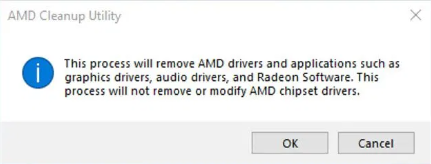
Uninstalling every AMD driver - Once your computer boots back up, open File Explorer, navigate to C:/AMD, and delete everything inside to ensure that you don’t leave behind any remnant files.
- Visit this link (here) and download the latest version of Display Driver Uninstaller.

Uninstalling the Display Driver Uninstaller Note: This is a 3rd party freeware that is capable of deep cleaning any remnants of your GPU drivers.
- Once the download is complete, use a utility like 7zip or Winzip to extract the contents of the DDU archive.
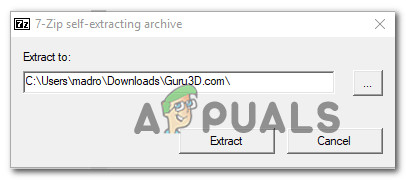
Extracting the contents of the utility - Follow the instructions (here) to restart your computer in Safe Mode.
- After your computer boots back up, double-click on the executable that you previously extracted and click on Yes when you get to the UAC (User Account Control) prompt.
- Once you’re inside the main Display Driver Uninstaller interface, start by selecting your GPU from the Select Device type drop-down menu (right-hand section of the screen). Next, click on Clean and restart to begin the cleanup process.
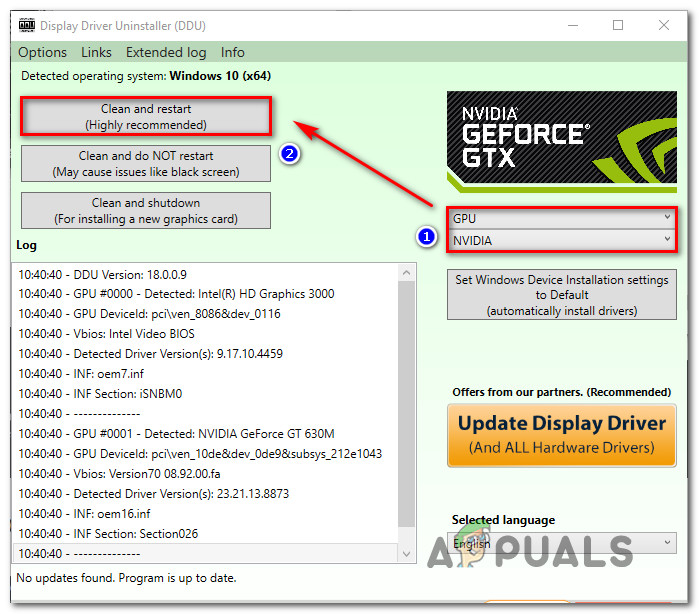
Cleaning up GeForce Experience & display drivers with DDU - Once the operation is complete, attempt to install the AMD driver once again and see if you still end up seeing the AMD Error 182.
In case you still see the same problem, move down to the next method below.
Disabling the Integrated GPU (if applicable)
In case the laptop or PC configuration were you encountering the issue on has an integrated ATI Radeon GPU (most likely ATI Radeon 3000), it’s very likely that the AMD Software utility tries to update that instead of the dedicated GPU.
If you’re still using an integrated ATI GPU, you will need to disable it first from your BIOS settings in order to fix the AMD Error 182. And since you’re dealing with a legacy integrated-GPU, doing this will also fix a myriad of other potential conflicts and inconsistencies that.
In case this scenario is applicable, you need to disable the integrated GPU – Depending on your particular scenario, disabling it via Device Manager might be enough, or you might need to disable it from your BIOS settings.
To accommodate both scenarios, we created two guides – The first will show you how to disable the integrated GPU from Device Manager while the second will show you how to do it directly from the BIOS settings
Option 1: Disabling integrated GPU via Device Manager
- Press Windows key + R to open up a Run dialog box. Next, type ‘devmgmt.msc’ and press Enter to open up Device Manager.
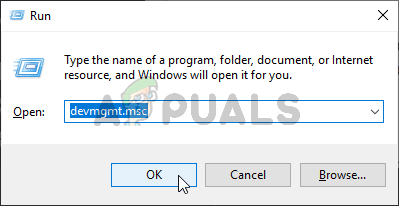
Running the Device Manager - Once you’re inside Device Manager, scroll down through the list of installed devices and expand on the menu associated with Display Adapters. Next, right-click on your integrated GPU and choose Disable device from the context menu.

Disabling the integrated GPU - After you do this and the icon of the integrated GPU has changed to reflect that it’s disabled, restart your computer.
- At the next startup, attempt to install the pending AMD GPU driver once again and see if the problem is now fixed.
Option 2: Disabling Integrated GPU via BIOS version
- Initiate a restart if the affected computer is already ON. When you get to the initial loading screen, repeatedly press the Setup (BIOS key) until you manage to access your BIOS settings.
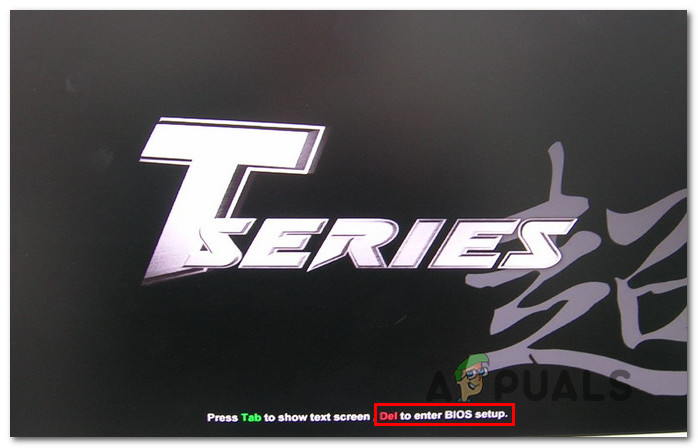
Pressing the Setup key to enter BIOS settings Note: With most motherboard models, the setup key will be displayed on the initial screen. But in case you can’t see it, search online for specific steps on accessing your BIOS settings.
- Once you’re inside your BIOS settings, access the Advanced tab and look for a category called Integrated Peripherals and disable IGP or Integrated Graphics. In case you have the option to select between Integrated Graphics and Discrete Graphics, choose Discrete Graphics.
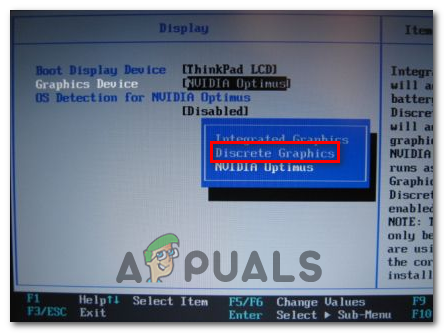
Forcing the usage of discrete graphics in BIOS Note: The Exact name of this option will be different from manufacturer to manufacturer.
- Save the changes that you just made and allow your computer to boot up again.
- Attempt to redo the driver update and see if you’re still seeing the AMD Error 182 during the driver installation sequence.
In case the same problem is still occurring, move down to the next potential fix below.
Doing a Repair install / Clean install
If none of the methods above have worked for you, the only potential fix by now is to simply reset every Windows component with a procedure like a clean install or repair install (in-place repair).
A repair install will end up refreshing every OS component without touching your personal files – Think of it as a clean install procedure that allows you to keep your apps, games and personal files present on the OS drive.
In case you don’t mind any data loss, you can go for the traditional clean install procedure.
